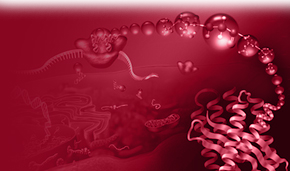|
|

|
|
Science Sparks @ ACTREC
|
 13 January 2020 13 January 2020
|
Vol. No. 9; Issue No. 405
|
|
|
Publications
|
|
1. Pradhan P, Srivastava A, Singh J, Biswas B, Saini A, Siddique I, Kumari P, Khan MA, Mishra A, Yadav PK, Kumar S, Bhavesh NS, Venkatraman P, Vivekanandan P, Kundu B(2020)- Prion protein transcription is auto-regulated through dynamic interactions with G-quadruplex motifs in its own promoter. Biochimica et Biophysica Acta (BBA) - Gene Regulatory Mechanisms.
2. Thakkar K, Jadhav S, Kasaliwal R, Memon SS, Patil VA, Thadani P, Lomte NK, Sankhe SS, Goel A, Epari S, Goel N, Lila AR, Shah N, Bandgar TR (2020)- Sellar surprises: a single centre experience of unusual sellar masses. Endocrine Connections.
3. Sunkara RR, Sarate RM, Setia P, Shah S, Gupta S, Chaturvedi P, Gera P, Waghmare SK (2020) - SFRP1 in skin tumor initiation and cancer stem cell regulation with potential implications in epithelial cancers. Stem Cell Reports.
4. Gurjar M, Mehta P, Sharma J, Patil S, Kulkarni P, Patil A, Nookala M, Joshi A, Gota V (2020). An HPLC method for simultaneous quantification of sunitinib and its active metabolite, SU12662, using hydrophilic interaction chromatography principle. Bioanalysis. 12(2):75-85.
5. Sharma DK, Siddiqui MQ, Gadewal N, Kumar Choudhary R, Varma AK, Misra HS, Rajpurohit YS (2020) - Phosphorylation of deinococcal RecA affects its structure and function dynamics implicated for its roles in radioresistance of Deinococcus radiodurans. Journal of Biomolecular Structure and Dynamics. 38(1):114-123.
6. Sankaran H, Sengupta S, Purohit V, Kotagere A, Roy Moulik N, Prasad M, Dhamne C, Narula G, Banavali S, Gota V (2020). A comparison of asparaginase activity in generic formulations of E-coli derived L- asparaginase: In-vitro study and retrospective analysis of asparaginase monitoring in pediatric patients with leukemia. British Journal of Clinical Pharmacology.
7. Kothekar AT, Divatia JV, Myatra SN, Patil A, Nookala Krishnamurthy, M, Maheshwarappa HM, Siddiqui SS, Gurjar M, Biswas S, Gota V (2020)- Clinical pharmacokinetics of 3-h extended infusion of meropenem in adult patients with severe sepsis and septic shock: implications for empirical therapy against Gram-negative bacteria. Annals of Intensive Care. 10(1):4.
8. Modi K, Dalvi S, Venkatraman P. Two negatively charged invariant residues influence ligand binding and conformational dynamics of 14-3-3ζ. FEBS Lett. 2019.
9. Dimri S, Arora R, Jasani A, De A (2019). Dynamic monitoring of STAT3 activation in live cells using a novel STAT3 Phospho-BRET sensor. American Journal of Nuclear Medicine and Molecular Imaging. 9(6): 321-334.
10. Bharambe HS, Paul R, Panwalkar P, Jalali R, Sridhar E, Gupta T, Moiyadi A, Shetty P, Kazi S, Deogharkar A, Masurkar S, Yogi K, Kunder R, Gadewal N, Goel A, Goel N, Chinnaswamy G, Ramaswamy V, Shirsat NV (2019) - Downregulation of miR-204 expression defines a highly aggressive subset of Group 3/Group 4 medulloblastomas. Acta Neuropathologica Communications. 7(1): 52.
|
|
|
|
|
|
|
Legends of Science
|

|
Shanti Swaroop Bhatnagar
Shanti Swaroop Bhatnagar was an Indian academician and scientific administrator. He earned his Doctorate in Science in University College, London. In 1921, he returned to India and joined the newly established Banaras Hindu University. His research contribution in the areas of magnetochemistry and physical chemistry of emulsion were widely recognized. He also did considerable work in applied chemistry. The first Director General of the Council of Scientific and Industrial Research (CSIR), he was revered as the "Father of Research Laboratories" in India. He was also the first Chairman of the University Grants Commission. He was elected as one of the first Fellows of the Indian Academy of Sciences. In 1958, to honour his name and legacy, the Indian Council of Scientific and Industrial Research (CSIR) instituted the Shanti Swarup Bhatnagar Prize for Science and Technology for scientists who have made significant contributions in various branches of science.
|
|
| |

|
Govindarajan Padmanaban
Govindranjan is an Indian biochemist and biotechnologist. He served as the Director of the Indian Institute of Science(1994-1998). He is serving as honorary professor in the department of biochemistry at IISc. He worked in the transcriptional regulation of Eukaryotic genes in the liver. He was interested in elucidating the multifaceted role of heme in cellular processes. His group discovered the heme-biosynthetic pathway in the malarial parasite and showed it to be a drug target. He also worked in the area of vaccine development. His team was successful in showing the antimalarial property of Curcumin and its efficacy in combination therapy in 2004. He received the prestigious Shanti Swarup Bhatnagar Prize for Science and Technology(1983). The Government of India Honoured him with Padma Shri (1991) and Padma Bhushan (2003).
|
|
| |
|
|
|
|
Do You Know?
In 1915, Katsusaburo Yamagiwa and Koichi Ichakawa induced cancer in rabbits by applying coal tar to their skin, providing experimental proof that chemicals can cause cancer.
|

|
|
|
Cancer News
|
| |
|
Copper-based nanomaterials can kill cancer cells in mice
|
|
09 January 2020, ScienceDaily
|
|
An interdisciplinary team of scientists from KU Leuven, the University of Bremen, the Leibniz Institute of Materials Engineering, and the University of Ioannina has succeeded in killing tumour cells in mice using nano-sized copper compounds together with immunotherapy. After the therapy, the cancer did not return...
|
|
|
| |
|
New open-source software judges accuracy of computer predictions of cancer genetics
|
|
10 January 2020, EurekAlert
|
|
Researchers have developed a simulation framework and scoring system to determine how accurately each algorithm predicted various measures of genetic diversity. These included: the proportion of cancerous cells in the tumour sample; the number of genetically different groups of cancerous cells in the tumour sample…
|
|
|
| |
|
|
| |
|
|
© 2020 Advanced Centre for Treatment, Research and Education in Cancer (ACTREC)
|
|